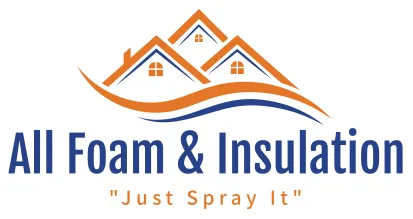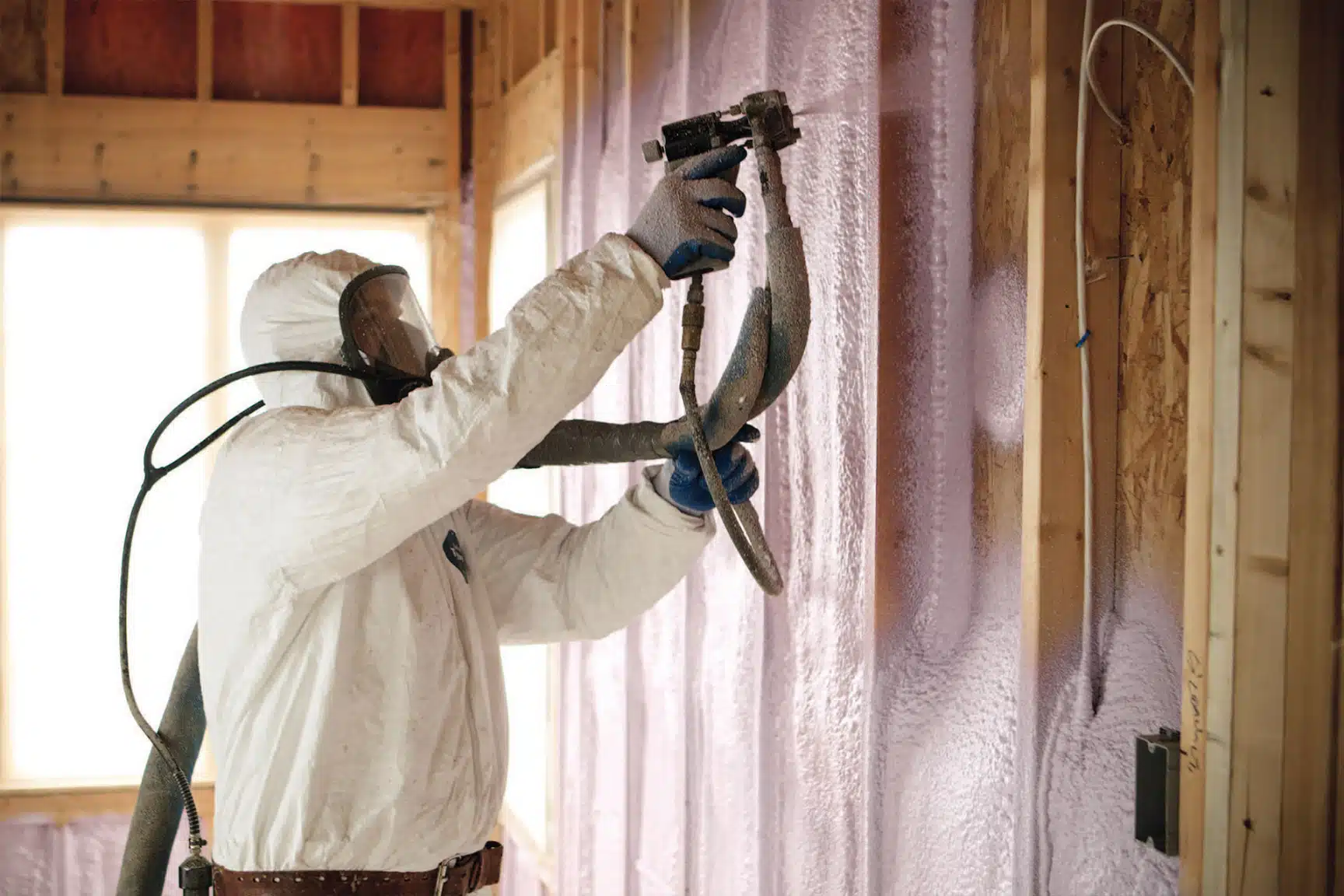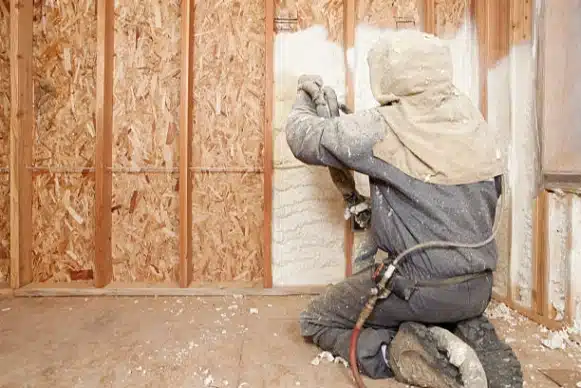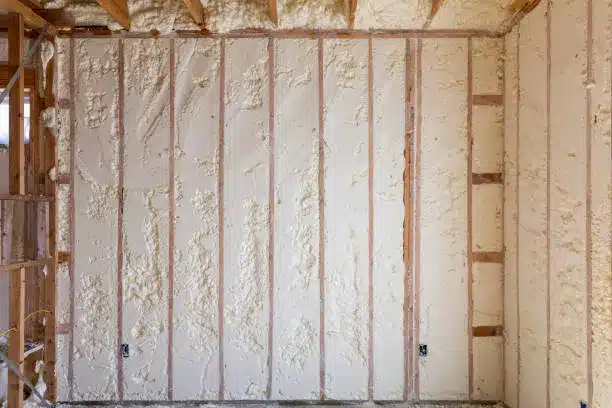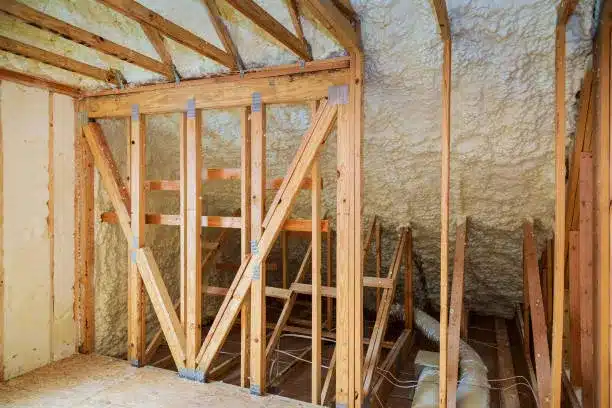Understanding Spray Foam Insulation in Cold Climates
Spray foam insulation is widely used for its energy efficiency and durability, but how well does it perform in cold weather conditions? Homeowners and builders often seek insulation that not only reduces heat loss but also withstands extreme temperature fluctuations. Spray foam, particularly closed-cell varieties, is designed to create an airtight seal that minimizes thermal bridging and enhances overall energy savings.
How Spray Foam Insulation Works in Cold Environments
Spray foam insulation expands upon application, filling gaps and crevices that traditional insulation materials may miss. In colder climates, maintaining consistent indoor temperatures is a challenge due to heat loss through walls, roofs, and floors. Spray foam’s ability to form an airtight barrier reduces this loss, keeping indoor spaces warm while lowering heating costs.
Key Features of Spray Foam in Cold Weather
- High R-Value Performance – Closed-cell spray foam has an R-value of around 6.5 per inch, providing superior insulation compared to fiberglass and cellulose.
- Air Sealing Properties – Eliminates drafts and prevents cold air infiltration.
- Moisture Resistance – Reduces condensation issues, preventing mold and mildew.
- Structural Reinforcement – Strengthens walls and roofs against heavy snow and wind loads.
- Longevity – Maintains performance for decades without degrading.
Types of Spray Foam for Cold Climates
There are two main types of spray foam insulation: open-cell and closed-cell. Each has unique benefits, but closed-cell spray foam is often preferred in cold climates due to its higher density and moisture resistance.
Open-Cell Spray Foam
- Lower cost compared to closed-cell.
- More flexible, allowing for slight structural movements.
- Ideal for interior walls and soundproofing.
Closed-Cell Spray Foam
- Higher R-value and greater thermal resistance.
- Acts as a vapor barrier, reducing moisture infiltration.
- More rigid, adding structural strength to buildings.
- Recommended for exterior walls, attics, and basements.
Challenges of Installing Spray Foam in Cold Weather
While spray foam insulation is highly effective in cold weather, installation in freezing temperatures requires proper handling.
- Application Temperature Limits – Most spray foam products have minimum application temperatures, typically around 40°F. If applied below this threshold, curing and expansion may be compromised.
- Surface Preparation – Surfaces must be dry and free of frost for proper adhesion.
- Professional Application – Trained installers use heated equipment to maintain the correct chemical reaction during spraying.
Energy Savings and Cost Benefits
Investing in spray foam insulation can significantly lower heating costs, making it a cost-effective solution for homeowners in colder regions.
- Lower Heating Bills – Reduces heat loss, requiring less energy to maintain indoor temperatures.
- Increased Home Value – Energy-efficient homes are more attractive to buyers.
- Fewer HVAC Strains – Reduces the workload on heating systems, extending their lifespan.
Why Professional Installation Matters
Proper installation ensures optimal performance. Hiring experienced professionals, such as All Foam & Insulation, LLC, guarantees that the insulation is applied correctly, maximizing its effectiveness. Contact (541) 826-9600 or email [email protected] for expert guidance and installation services.
Comparing Spray Foam to Other Insulation Methods in Cold Climates
| Insulation Type | R-Value per Inch | Air Sealing | Moisture Resistance | Durability |
|---|---|---|---|---|
| Fiberglass | 2.2 – 3.8 | Moderate | Low | Medium |
| Cellulose | 3.2 – 3.8 | High | Moderate | Medium |
| Open-Cell Foam | 3.5 – 4.0 | High | Low | High |
| Closed-Cell Foam | 6.0 – 7.0 | Very High | Very High | Very High |
Conclusion
Spray foam insulation is a reliable and efficient solution for cold weather conditions. Its high R-value, air-sealing capabilities, and moisture resistance make it an excellent choice for homeowners looking to improve energy efficiency. For expert installation and professional guidance, reach out to All Foam & Insulation, LLC at (541) 826-9600 or email [email protected].
FAQs About Spray Foam Insulation in Cold Weather
1. Can spray foam be installed in freezing temperatures?
Yes, but special equipment and techniques are needed to ensure proper curing. Professional installers use heated rigs to apply foam correctly in colder conditions.
2. Does spray foam prevent ice dams?
Yes. By sealing air leaks and improving insulation, spray foam reduces heat loss through the roof, minimizing ice dam formation.
3. How long does spray foam insulation last?
Spray foam can last over 30 years without losing its insulating properties, making it a long-term investment.
4. Will spray foam insulation keep my home warmer in winter?
Yes, its high R-value and airtight seal prevent heat loss, maintaining consistent indoor temperatures.
5. Is spray foam insulation worth the cost?
While the upfront cost is higher than traditional insulation, the energy savings and long lifespan make it a cost-effective choice over time.
6. Does closed-cell spray foam act as a vapor barrier?
Yes, closed-cell spray foam has a built-in vapor barrier, helping to prevent moisture buildup inside walls.
7. Can I apply spray foam insulation myself?
DIY kits exist, but professional installation ensures the best performance, especially in cold climates where curing conditions must be controlled.
8. How does spray foam compare to fiberglass in cold climates?
Spray foam provides better insulation, air sealing, and moisture resistance compared to fiberglass, making it a superior option for cold regions.
9. Will spray foam make my home airtight?
Yes, it creates a continuous insulation layer, eliminating drafts and improving indoor air quality.
10. Is spray foam safe for my home?
Once cured, spray foam is non-toxic and does not release harmful chemicals, making it safe for residential use.

